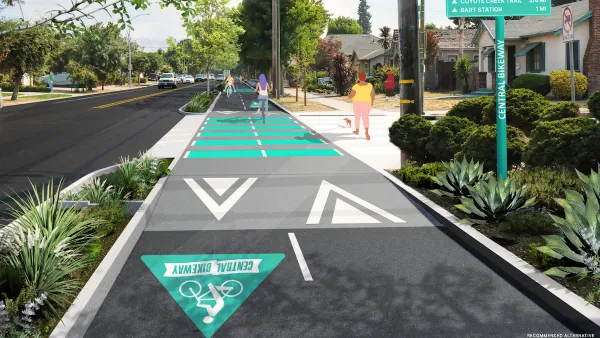In city after city, stadium-building with tax dollars is taking priority over more important priorities like public schools.
"The building of stadiums has become the substitute for anything resembling an urban policy in this country. The stadiums are presented as a microwave-instant solution to the problems of crumbling schools, urban decay and suburban flight.
Stadiums are sporting shrines to the dogma of trickle-down economics. In the past 10 years, more than $16 billion of the public's money has been spent for stadium construction and upkeep from coast to coast. Though some cities are beginning to resist paying the full tab, any kind of subsidy is a fool's investment, ending up being little more than monuments to corporate greed: $500 million welfare hotels for America's billionaires built with funds that could have been spent more wisely on just about anything else.
The era of big government may be over, but it has been replaced by the Rise of the Domes. Reports from both the right-wing Cato Institute and the more centrist Brookings Institution dismiss stadium funding as an utter financial flop, yet the domes keep coming.
[S]ports owners...[have] set the budget agendas for municipalities around the country with a simple credo: stadiums first and people last.
In August 2005, we saw the extreme results of these kinds of priorities. After Hurricane Katrina flattened the Gulf Coast, the Louisiana Superdome, the largest domed structure in the Western Hemisphere, morphed into a homeless shelter from hell, inhabited yet uninhabitable for an estimated 30,000 of New Orleans' poorest residents."
FULL STORY: The Doming of America

Planetizen Federal Action Tracker
A weekly monitor of how Trump’s orders and actions are impacting planners and planning in America.

Silicon Valley ‘Bike Superhighway’ Awarded $14M State Grant
A Caltrans grant brings the 10-mile Central Bikeway project connecting Santa Clara and East San Jose closer to fruition.

Amtrak Cutting Jobs, Funding to High-Speed Rail
The agency plans to cut 10 percent of its workforce and has confirmed it will not fund new high-speed rail projects.

California Set to Increase Electric Truck Chargers by 25%
The California Transportation Commission approved funding for an additional 500 charging ports for electric trucks along some of the state’s busiest freight corridors.

21 Climate Resilience Projects Cancelled by the EPA
The federal government has pulled funding for at least 21 projects related to farming, food systems, and environmental justice to comply with one of Trump’s early executive orders.

Trump Executive Order on Homelessness Calls for Forced Institutionalization
The order seeks to remove legal precedents and consent decrees that prevent cities from moving unhoused people from the street to treatment centers.
Urban Design for Planners 1: Software Tools
This six-course series explores essential urban design concepts using open source software and equips planners with the tools they need to participate fully in the urban design process.
Planning for Universal Design
Learn the tools for implementing Universal Design in planning regulations.
Yukon Government
Caltrans
New Jersey Institute of Technology
Mpact (founded as Rail~Volution)
City of Camden Redevelopment Agency
City of Norman, Oklahoma
City of Portland
City of Laramie


























